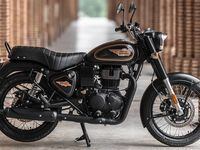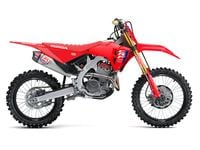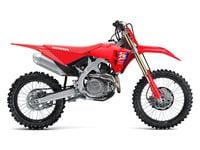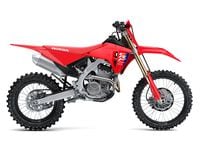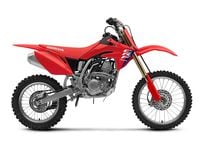KTM first introduced its Transfer Port Injection (TPI) technology back in 2018 on its 250 XC-W TPI and 300 XC-W TPI enduro bikes. Although the 300 XC-W TPI did not come to the United States until 2019—that was a new model to the US market that year. For 2020, the Austrian manufacturer has added its TPI technology to the third of its current two-stroke enduro models, the 150 XC-W TPI, along with both of its two-stroke cross-country models, the 250 XC TPI and 300 XC TPI. In keeping with its "Ready to Race" slogan, KTM invited us to round 7 of the World Off-Road Championship Series (WORCS) at Grays Harbor ORV in McCleary, Washington, to race its flagship two-stroke cross-country motorcycle, the 300 XC TPI.
The 293.2cc powerplant has a strong yet smooth bottom-end power that makes it supremely easy to lug at low rpm. The engine hits hard in the midrange and signs off noticeably on the top-end, which makes it easy to ride a gear high and works best when short-shifted. The powerband worked phenomenally on the technical WORCS racecourse, which featured everything from tight single-track to more wide-open off-road sections and a motocross track segment.
While we thankfully didn’t receive any rain leading up to or during the race, being that we were in the Northwest, there were still several parts of the course that were slick, including areas littered with small rocks and shiny tree roots, both of which would put you on the ground in an instant if you hit them at the wrong angle, didn’t use proper throttle control, or simply weren’t paying attention. The 300 XC TPI’s excellent low-end torque enabled me to easily ride a gear high and keep the rear end tracking over the slippery terrain, and the bike never once came close to stalling in even the tightest of areas.
There is a slight hiccup in the powerband that is only noticeable when rolling on the throttle slowly from low rpm. When accelerating, the engine signs off slightly and has a slight surge when transitioning into the midrange. However, this was not detectable when grabbing a handful of throttle suddenly such as during the start of a race, accelerating up a hill, or popping the clutch to ride over an obstacle. Our estimation is that it’s the mapping, which KTM has continuously worked on refining with these TPI models since 2018 when they were first released on the market, so we anticipate this very minor and minimally noticeable imperfection in the powerband can be improved upon.
The suspension on a cross-country bike is somewhat of a tradeoff—a compromise between being plush enough for the trails, and stiff enough to withstand the larger impacts of a motocross track. The 300 XC TPI has a great balance between both of these riding types. After the 30-minute practice session in the morning, I opted to go slightly softer on the fork and shock since the majority of the course was single-track and two-track trails, and I figured the softer settings would help with finding traction as well.
During the race, the WP components did an excellent job of absorbing the plethora of small rocks, tree roots, braking bumps, and even the large holes that formed on the rough course. More than a few times I hit the front end on an angled tree root fearing I would wash the front end and go down, but the Xact fork stayed planted and helped the front end maintain traction. The only time the fork exhibited any sort of harshness was on one particular slapdown landing while exiting the motocross track, but it was a relatively minor amount of feedback in the hands, and would have likely decreased or completely gone away had I softened the fork more. I could have gone softer on the shock too. Had it been a regular test day I would have experimented with more different setting, but I had a one-hour race to finish!
KTM’s latest-generation SX and XC models have a great chassis and ergonomics. With plenty of switchbacks on the single-track trails the 300 XC TPI handled admirably and was easy to maneuver. There were only a few high-speed straightaways on the course, and the KTM was rock solid in those areas as well. The ergonomics are excellent too with thin and straight radiator shrouds, a flat and comfortable seat, and an agreeable bar bend and height.
KTM’s TPI technology is awesome. It alleviates the need for premixing and jetting regardless of the altitude or weather, and the power delivery is fairly close to the prior carbureted model and will likely only improve with time as KTM continues to dial it in. Being able to race test KTM’s flagship cross-country two-stroke motorcycle on a course as diverse as the one at Grays Harbor ORV was an excellent test of the bike’s all-around capability. While it’s certainly most at home on faster, flowing off-road sections, the 300 XC TPI worked admirably on slower-paced single-track trails, and the motocross track alike.
Helmet: Shoei VFX-EVO Goggle: Oakley Airbrake Neck Brace: Leatt GPX 5.5 Jersey: Fly Racing Lite Gloves: Fly Racing Lite Pant: Fly Racing Lite Boots: Sidi Crossfire 3 SR

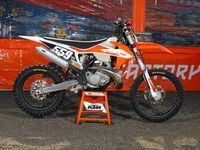
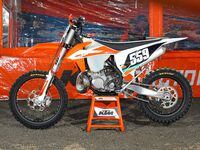
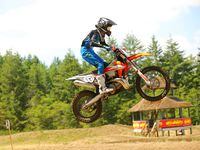
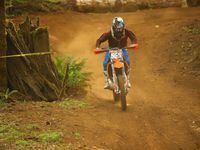


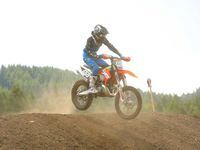

/cloudfront-us-east-1.images.arcpublishing.com/octane/N575KB7BDZDPPJBRLZRG2ANHKI.jpg)
/cloudfront-us-east-1.images.arcpublishing.com/octane/T77HXRXV4NGKDNZODMSEIBRXPE.jpg)
/cloudfront-us-east-1.images.arcpublishing.com/octane/NKMM7V2P3BCSXAV6J56FKK67OU.jpg)
/cloudfront-us-east-1.images.arcpublishing.com/octane/SWQRQV27DNFA7LXGFI7FNFNGOQ.jpg)
/cloudfront-us-east-1.images.arcpublishing.com/octane/GYEXUJBV5JGQLLZNXO7KRVSTEY.jpg)
/cloudfront-us-east-1.images.arcpublishing.com/octane/MCWUSJJVJVG45P7QQG3WOXZR54.jpg)
/cloudfront-us-east-1.images.arcpublishing.com/octane/AJ4EFPH2CRDURDAB5LPEA2V2NE.jpg)
/cloudfront-us-east-1.images.arcpublishing.com/octane/LSDHIL22SZAFFPYLKP5ZXLJSIY.jpg)
/cloudfront-us-east-1.images.arcpublishing.com/octane/SH46HIOX4RELXLXF6AE3SFGH4A.jpg)
/cloudfront-us-east-1.images.arcpublishing.com/octane/JUZ52WFWLJGMNH7PGZNOKP3MUY.jpg)
